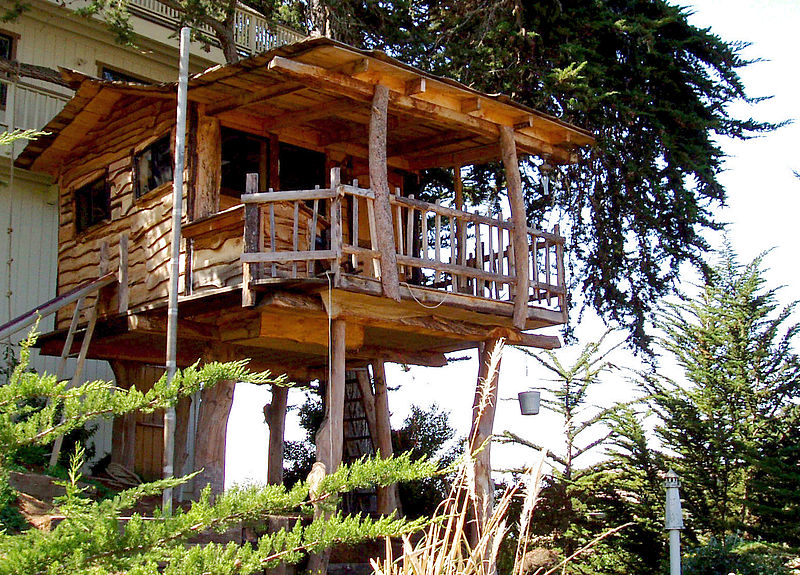History of Tree Houses – A Childhood Dream Home

As kids, many of us fall in love with treehouses, but we abandon them when we grow up. In the few last years though, more and more adults are reconsidering tree houses as their homes, retreats or overnight resort getaway.
Tree houses are not an invention of our century, in fact, they have existed for many years: living up in the air has always fascinated people.
Treehouse life has largely been a story of fantasy, but they actually have a long and rich history in the real world.
The oldest proof of a treehouse constructions appears to date back to the Ancient Rome when Caligula decided to create a dining room up in a tree for one of his celebrations.

Treehouses can be traced back to the people of the South Pacific and Southeast Asia, who lived in trees to provide secure homes for their families. Hindu monks also lived in tree houses to free themselves from earthbound considerations. During the Renaissance Period, tree houses became very popular in Europe, especially in France and England. Many of these hidden homes were built for the European upper classes. With the construction of tree house village in Le Plessis, this phenomenon reached its peak.

For some people, living in the trees isn’t only for entertainment, but a necessity to survive in a hostile environment. The Korowai people living in Papua, New Guinea, have been building tree homes for centuries because of safety reasons. From a 50 meter tree, they can easily spot their enemies, the wild animals, and mosquitos don’t fly at those altitudes.

A house on the ground is just a house. Treehouse living is an idea in the realm of favored childhood fantasies, but a family treehouse could be a reality for you. Peace and privacy are top benefits of living in a tree house, also the safety and the tranquility, and of course the unique view. These are just some of the advantages that a ground home can’t offer.
In Crossville, Tennesse, there is a tree chapel called ” The Minister’s House”, it is the largest tree house reported until now.

Another advantage of the tree houses is that they can be built with low-cost materials and using low-tech or manual methods. The foundation is one of the most important things to consider. Build your house on at least 2 trees (depends on how big you want your home to be and how many people are going to live there). In warm, humid areas be sure to use treated wood to fend off termites and other insects, fungi and molds, in cooler ones, invest in proper insulation.
You will need to understand the biological aspects of the foundation you are building on because the tree is a living thing. Consult professionals who can help you with issues such as safety, rain-proofing, pest control, plumbing, power and other technical matters. Always consider the need of a possible extension, things change.

Living on a tree is still a forgotten childhood dream for the majority of us, but the fact is that it’s still a hidden desire in nearly all of us to experience the mystical, cozy and Peter Pan style of life.
If you have any comments then please drop us a message on our Outdoor Revival Facebook page
If you see a good product or have a blog you would like to share let us know about it on our FB page, we’re also happy for article and review submissions, we’d love to hear from you.
Outdoor Revival – Reconnecting us all to the Outdoors
